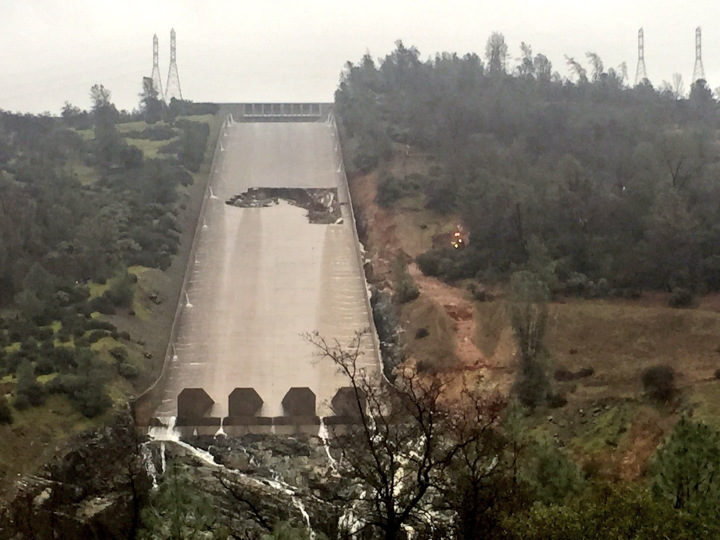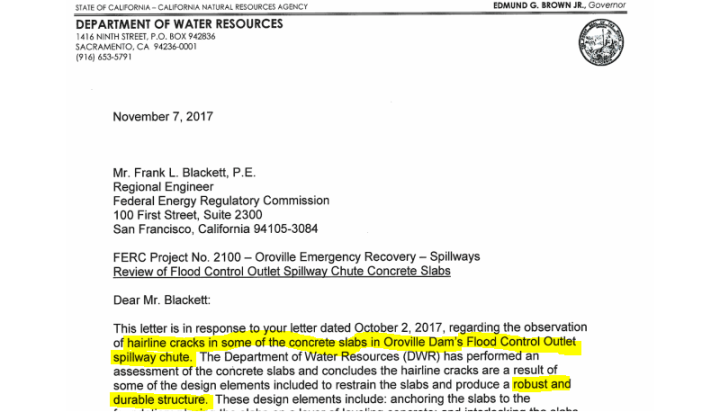CA Department of of Water Resources says: "don't worry", it's "robust".
From ChicoER: Small cracks have appeared in the new concrete in the main spillway at Oroville Dam, but the state says they were expected and nothing to worry about.
An explanation of the "hairline cracks" was called for in a letter the Federal Energy Regulatory Commission wrote to the Department of Water Resources in October. KQED radio in San Francisco first reported the previously undisclosed letter Tuesday.
The Oct. 2 letter from FERC said it understood DWR was concerned when the cracks were discovered after concrete curing covers were removed from some of the slabs poured this year.
It called for a report within 30 days that mapped the cracks, identified potential causes and spelled out remedies, "if necessary."
The state has been rebuilding the spillway after most of it eroded away in February.
KQED also reported Tuesday on the cover letter to the DWR report submitted Nov. 7 in response to the FERC letter. The actual report was not available.
In the cover letter, DWR said it had evaluated the cracks and determined they were caused by efforts to create "a robust and durable structure.
"With the inclusion of these design elements, the presence of hairline cracks was anticipated and is not expected to affect the integrity of the slabs," DWR said.Yeah, sure. Full story here.
From KQED:
UC Berkeley civil engineering professor Robert Bea, a veteran analyst of structure failures, said cracking in high-strength reinforced concrete structures is never expected.
"Cracking in high-strength reinforced concrete structures is never 'to be expected,' " Bea said in an email. Even small cracks could increase stresses in the concrete when it is under "service loading" - for instance, when large volumes of water hurtle down the structure at speeds approaching 90 mph.DWR inspection and repair records going back to the 1970s documented widespread cracking of the 3,000-foot-long spillway chute - largely because of the thinness of the concrete covering the drainage system below the concrete slab. On at least two occasions, sections of the steel rebar inside the slab were found to be corroded and in need of replacement. After the spillway failed last February, some of the steel rods intended to anchor the slab to underlying rock were also found to be corroded.
The cracking "develops paths for water to reach the steel elements embedded in the concrete and accelerate corrosion," Bea wrote in an email. "Such corrosion was responsible for the degradation and ultimate failure of the steel reinforcing in parts of the original gated spillway."
More at KQED here at their website.
Documents:
https://assets.documentcloud.org/documents/4311073/FERC-DWR-Oroville-Concrete.pdf
https://www.documentcloud.org/documents/4311072-DWR-FERC-Concrete171107.html





We'll be waiting a while - so don't hold your breath.
R.C.